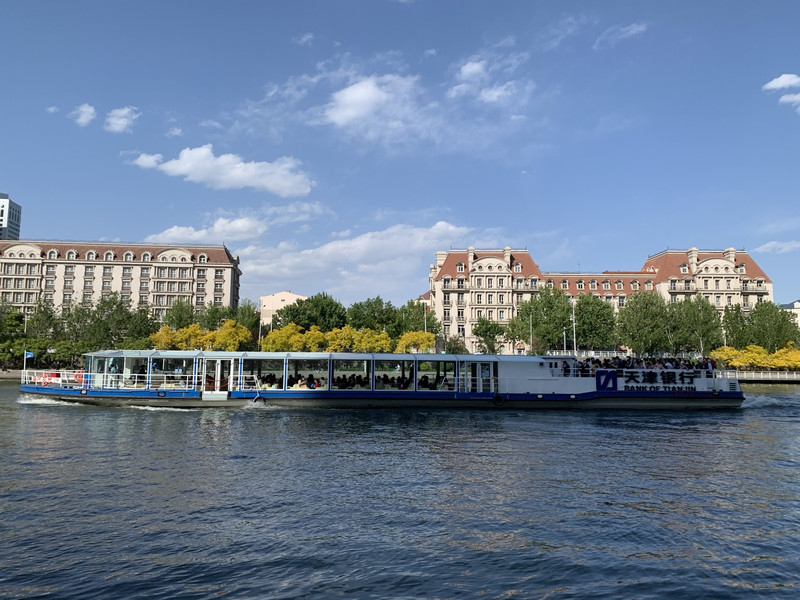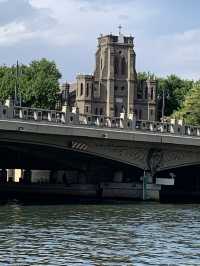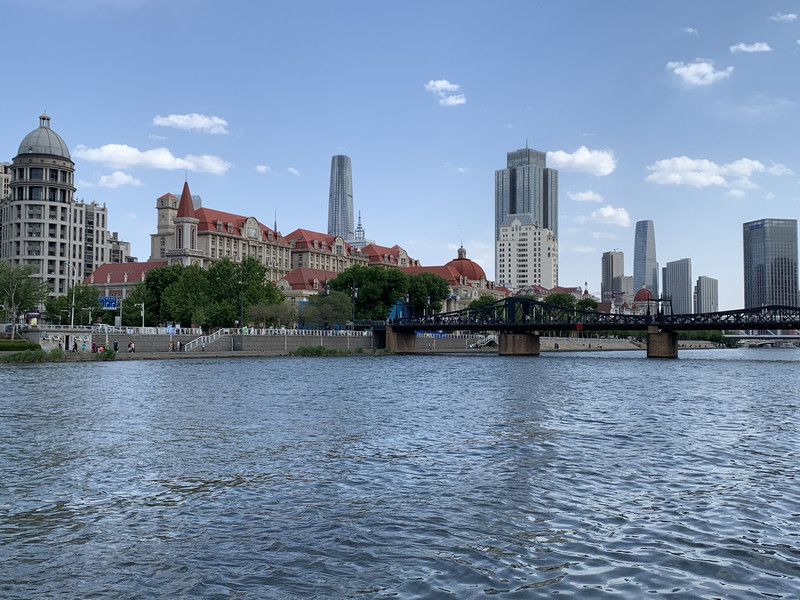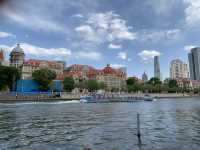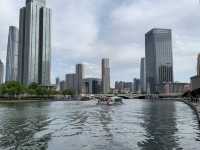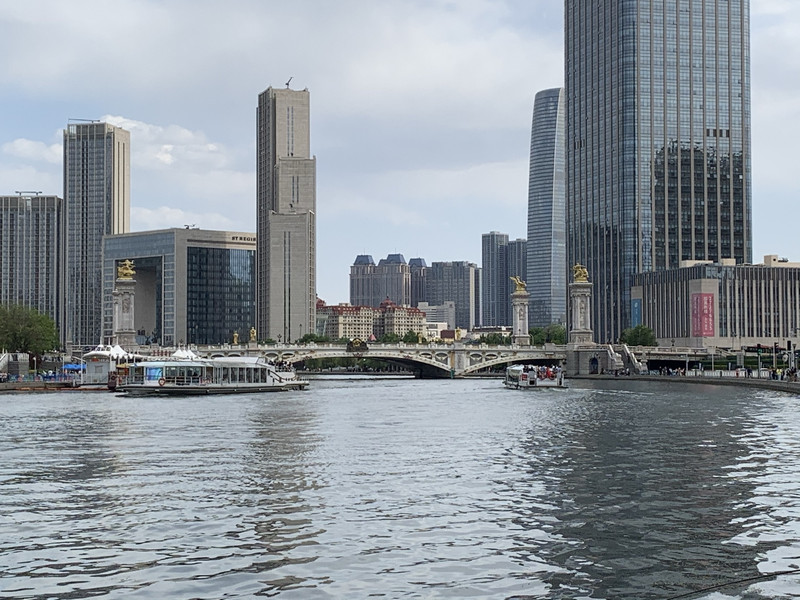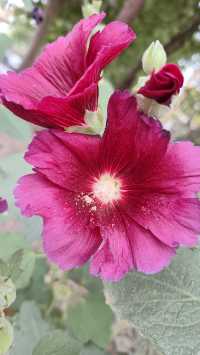From the Tianjin Eye Ferris wheel east across the Sancha River is the Haihe River, the largest water system in northern China, one of the seven major rivers in China. The Haihe River system was collectively known as "Jiuhe" in ancient times. During the Song Dynasty, the dry current of Haihe River was the lower reaches of the Jiehe River. Jin and Yuan were renamed the Naoqi River and Daqi River. The name Haihe began to be seen at the end of the Ming Dynasty. It was not until the Qing Dynasty that the names such as Naoqi River were gradually replaced by the name Haihe. The Haihe River system consists of five main tributaries of the Haihe River and the upstream North Canal (including the North Canal, Chaobai River and the Shanghai Canal), Yongding River, Daqing River, Ziya River and South Canal. The main current of the Haihe River should be 76 kilometers from the North Confluence Exit (Dahongqiao East) to the Dagukou (Haihe Waterproof Gate); From Sancha Estuary (or Jingang Bridge) to Dagukou should be about 73 kilometers. The old Jingang Bridge is a steel bridge, similar to the Jiefang Bridge, smaller than the Jiefang Bridge, no longer exists, and replaced by the current double-storey bridge. Follow the south bank of the Haihe River to the east and cross the Jingang Bridge to the other side. With the change of perspective, the scenery of the seaside is like crossing. Hiding the high-rise buildings on the east side of the King Kong Bridge is like coming to the Seine River. The Virgin of the Seaside Building at the head of the Lion Forest Bridge tells us about the past. The Jintang Bridge proves the history of the two sides of the Haihe River. Looking eastwards over the Progress Bridge, under the embellishment of the magnificent sculptures of Bei'an Bridge, a modern and prosperous scene. The Haihe River is still the same, and the scenes on both sides of the Straits make Tianjin so beautiful.
;
Haihe River Review
4.7 /5911 Reviews
Popular Destinations
Mount Druitt Travel | Ningan Travel | Jining Travel | Albany Travel | Emerald Travel | Queenstown Travel | Krabi Travel | Bowral Travel | Hahndorf Travel | Sale Travel | Edmonton Travel | Ulaanbaatar Travel | Caloundra Travel | Canberra Travel | Sarzana Travel | Bahrain Travel | Durban Travel | San Bernardino Travel | Manchester Travel | Takua Pa Travel | Kaga Travel | Sturgeon Bay Travel | New Mexico Travel | Bowling Green Travel | Matsuura Travel | iLembe DC Travel | Long Beach Travel | Ruidoso Travel | Archanes-Asterousia Travel | Bergen Travel
Recommended Attractions at Popular Destinations
Bangkok attraction near me | Tokyo attraction near me | Manila attraction near me | Hong Kong attraction near me | Seoul attraction near me | Taipei attraction near me | Los Angeles attraction near me | New York attraction near me | Shanghai attraction near me | Kuala Lumpur attraction near me | Shenzhen attraction near me | Osaka attraction near me | Singapore attraction near me | Guangzhou attraction near me | London attraction near me | San Francisco attraction near me | Beijing attraction near me | Macau attraction near me | Bali attraction near me | Paris attraction near me | Ho Chi Minh City attraction near me | Orlando attraction near me | Jakarta attraction near me | Phuket attraction near me | Chicago attraction near me | Toronto attraction near me | Istanbul attraction near me | Cebu attraction near me | Dallas attraction near me | Seattle attraction near me
Popular Attractions
Melbourne Museum | Melbourne Zoo | Jiuzhaigou Scenic Area | SkyPoint Observation Deck | Hunter Valley Gardens | Sunway Lagoon Theme Park | Peninsula Hot Springs | Tokyo DisneySea | Blue Mountains National Park | Colorful Guizhou Style Performance | Chongqing Two Rivers Night Tour | Luna Park Melbourne | Portland Christian Center | Mudhi Mandal Devi | Igreja Tabernáculo Eden | Masjid At-Taqwa Kayangan مسجد التقوى كايغكان | Masjid Babussalam Pengemos | THPRD Center at PCC Rock Creek | Deutsches Museum Library | Fellowship Missionary Baptist Church | Ad Brás Valo Velho | Prince Kung's Palace Museum | Chongqing Zoo | Luoyang Laojun Mountain | Wuzhen Water Town | Patong Beach | Shanghai Maglev Train | Ngong Ping 360 | Hartley's Crocodile Adventures | Ciqikou Ancient Town
Popular Travelogues
Bangkok Travelogue | Tokyo Travelogue | Hong Kong Travelogue | Seoul Travelogue | Los Angeles Travelogue | New York Travelogue | Shanghai Travelogue | Shenzhen Travelogue | Kuala Lumpur Travelogue | Osaka Travelogue | Singapore Travelogue | London Travelogue | Beijing Travelogue | Macau Travelogue | Bali Travelogue | Paris Travelogue | Phuket Travelogue | Toronto Travelogue
Payment Methods
Our Partners
Copyright © 2024 Trip.com Travel Singapore Pte. Ltd. All rights reserved
Site Operator: Trip.com Travel Singapore Pte. Ltd.
Site Operator: Trip.com Travel Singapore Pte. Ltd.



